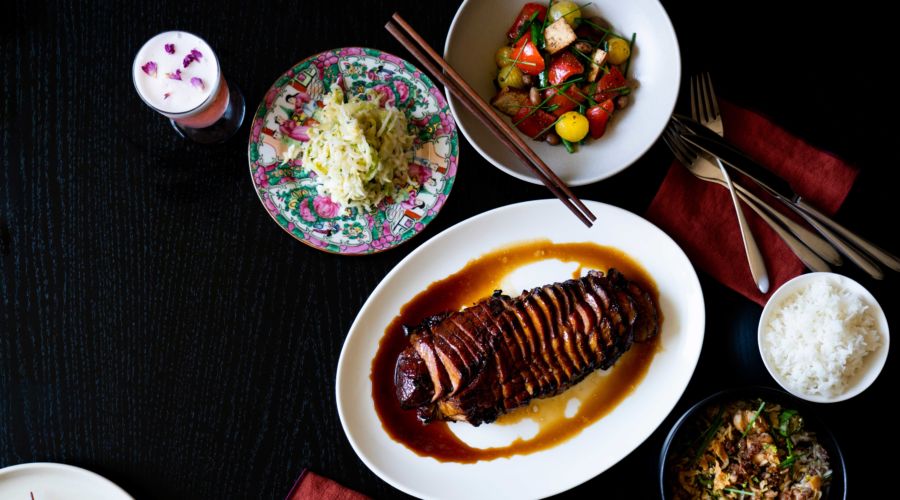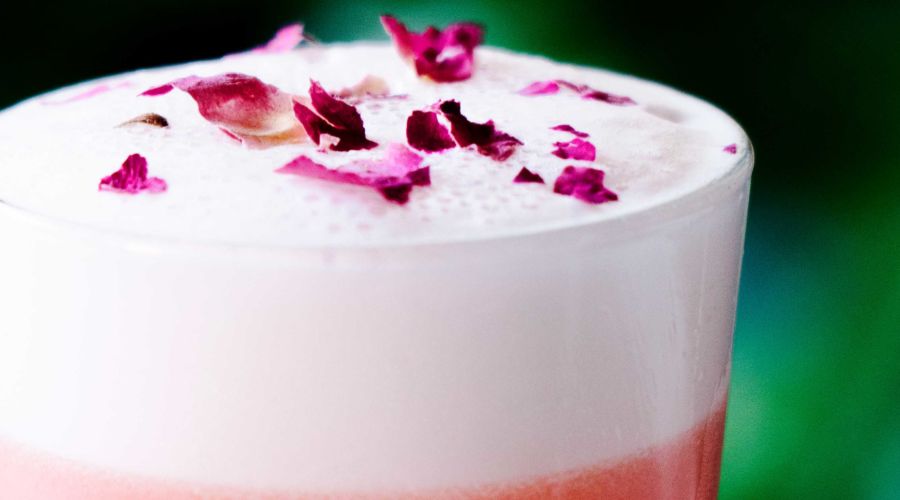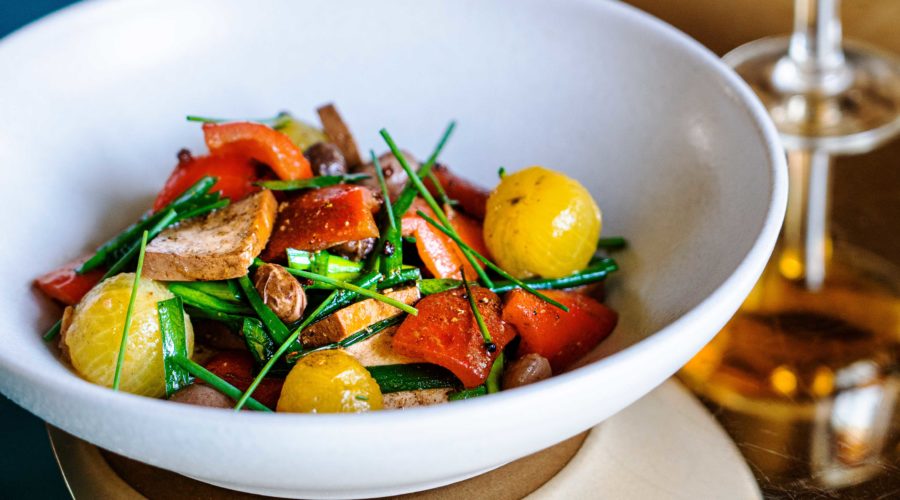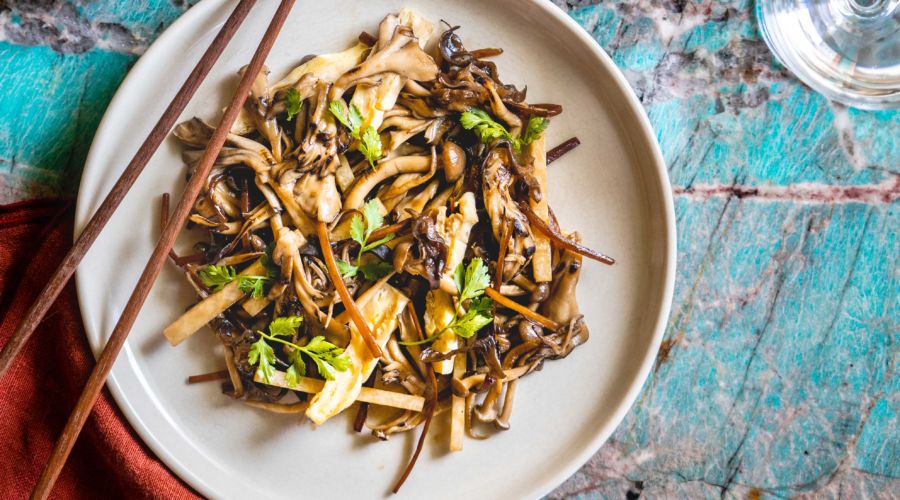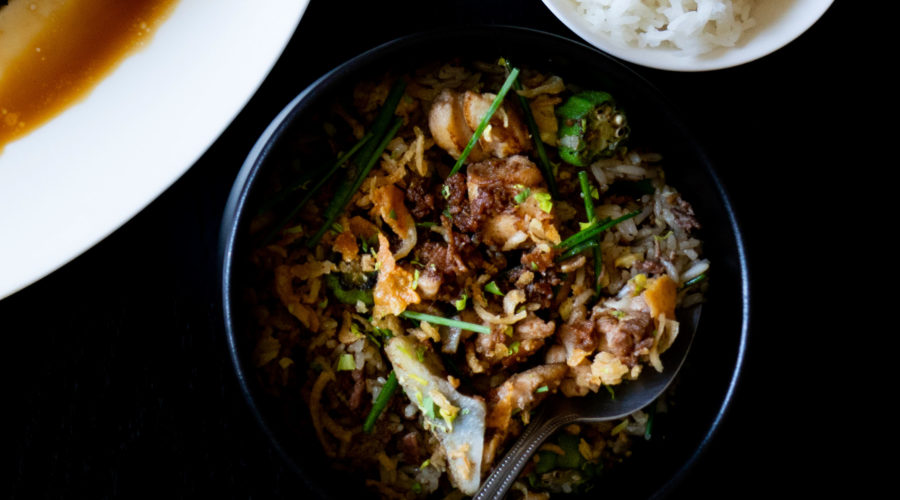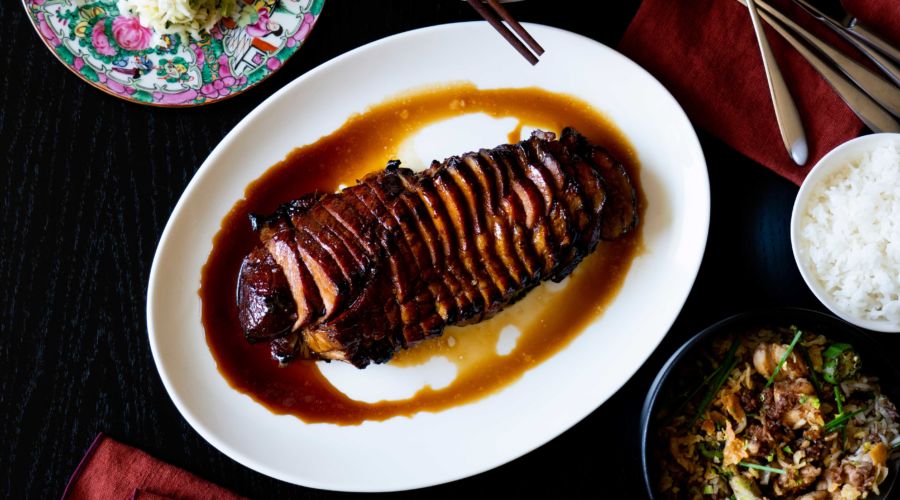Thomas J. Story
Chinese Take-In
“I ask myself how I can reinterpret Chinese dishes,” says Jew of the modernized Chinese classics he puts on his menus. “I want to pay homage to where the dishes came from but also honor how people want to eat now.”
Mission accomplished with the mu shu mushroom, as with the rest of the dishes Jew developed for this party menu, photographed on location at his Moongate Lounge restaurant. While he’s pushing things forward with his food, Jew is committed to preserving the foodways that form the foundation of his cooking: He’s currently writing a cookbook that catalogs Chinese techniques and ingredients that remain under-chronicled here in the U.S. “It’s a bummer that legendary spots in Chinatown are closing,” Jew says. “So I’m doing what I can to preserve their techniques.” And as you cook and commit these recipes to heart, you will too.
Thomas J. Story
Curiosity Cocktail
This drink, from Moongate beverage director Don Mallory, requires a few specialty ingredients and a specialty syrup. Genepi, an herbal liqueur from the Alps made with hand-picked alpine flowers, can be found through San Francisco’s K&L Wines. To make the syrup, combine 1 cup chopped pluots with 1⁄2 cup sugar and 1⁄2 cup water in a heavy saucepot. Simmer on low until the fruit and sugar make a syrup. Remove from heat and gently mash the fruit to release as much juice as possible. Strain and chill. Use immediately or store in the refrigerator for up to three days.
Recipe: Curiosity Cocktail
Thomas J. Story
King Crab Rangoon with Garlic Cheese Dip
A tiki bar pupu platter mainstay, crab Rangoon was made with wonton skins stuffed with cream cheese spiked with Worcestershire sauce. It was often touted as a Burmese dish, though there’s not a lot of evidence to support that. Jew flips the script—stuffing spring rolls with crab, serving the cream cheese as a dip, and sprinkling it all with a Sichuan–Old Bay spice—landing it solidly in modern, mash-up Chinese America.
Thomas J. Story
Smoky Tofu with Tomatoes
Jew cold-smokes his tofu for 30 minutes, but we arrived at a similar result using smoked olive oil.
Recipe: Smoky Tofu with Tomatoes
Thomas J. Story
Mu Shu Mushroom
Mu shu pork is said to have its origins in northern China. In this version, Jew eliminates the pork and adds wild mushrooms, though it will still be delicious with store-bought creminis or other fresh mushrooms. Wood-ear mushrooms are a more traditional ingredient but are optional. Look for mu shu pancakes at Asian markets. Feel free to substitute 6-inch flour tortillas.
Recipe: Mu Shu Mushroom
Thomas J. Story
Dirty Fried Rice
Jew is particularly known for his inventive spins on fried rice. In this version, he takes cues from the cooking of the American south (chicken skin, okra) and works them into the Chinese takeout favorite. The trick with this, as with all fried rice, is having your ingredients prepped thoroughly in advance and laid out ready to go into the hot wok. And keep that wok (or pan) very very hot. Fried rice is all go time: Ingredients caramelize fast and take on that smoky flavor, but you have to take care not to burn them.
Recipe: Dirty Fried Rice
Thomas J. Story
Char Siu
Vividly red and deeply bronzed, char siu is an iconic Chinese-restaurant dish the world over, and for good reason: Fatty pork and deep, sweet roasty flavors have an ability to ennoble a simple bowl of white rice. Sometimes made with pork belly or loin, this version uses pork shoulder, which offers a good mix of rich and lean. Originally from Guangdong, the dish can skew sweet at some takeout spots in the U.S. and often gets its rosy color from artificial food coloring. Jew dials down the sweetness, intensifies the spice with Sichuan peppercorns, and colors it naturally with beet juice. Take care when working with beet juice, as it can easily stain clothes.
Recipe: Char Siu
Thomas J. Story
Sourcing Tips
Packed with flavor, these ingredients are go-tos in the Chinese-American kitchen; chef Brandon Jew (above) uses them often. You won’t necessarily find them in every grocery store, but thanks to the wonders of the internet, you can have them on your doorstep tomorrow.
Fermented Bean Curd: Also known as fermented red tofu, this custardy, earthy, and slightly sweet ingredient is key to char siu and adds flavor to the marinade for the tomato tofu. Use it in other marinades and soups.
Baijiu: With tropical aromas, hints of anise, and mushroomy bass notes, baijiu can be challenging for some palates when drunk straight, but it mixes well in cocktails built with other bold flavors.
Shaoxing Rice Wine: The legendary wine of China is fermented from rice. Use it for deglazing pan sauces, marinating proteins, and any other time you would use cooking wine.
